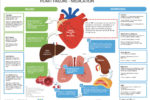Swallowing really is a life or death matter. Nearly half of people who have had a stroke will initially experience difficulty swallowing. This is called dysphagia. In this article, we look at the anatomy and physiology of swallowing, what can go wrong in people who have had a stroke, and what can help. Explanations are given clearly, using simple language that you can use with patients and their family members.


























